
|
|
Font Size:
|
||||
|
|
|
|
||||
STATISTICAL BRIEF #62:
Characteristics of Persons Who Seldom or Never Wear Seat Belts, 2002
Highlights
- Overall, among persons 16-64 years of age in 2002, 87.7 percent reported always or nearly always using seat belts when driving or riding in a car, 6.9 percent reported sometimes using seat belts, and 5.4 percent reported seldom or never using seat belts.
- Young adults were the most likely to not (or seldom) use seat belts when driving or riding in a car. The 19-21 (6.1 percent) and 22-29 (6.7 percent) age groups had the highest rates of seat belt nonuse.
- Males were about three times as likely to not (or seldom) use seat belts as females within both the 19-21 and 22-29 age groups.
- Those in poor/near poor (6.9 percent) and low income families (6.0 percent) were more likely to not (or seldom) use seat belts than those in middle/high income families (5.0 percent).
- Those covered by public insurance only (7.6 percent) or lacking insurance coverage entirely (7.1 percent) were 1.6 and 1.5 times as likely, respectively, to not (or seldom) use seat belts as those with private health insurance coverage (4.8 percent).
- Those with less than a high school education (6.1 percent) and those having completed high school (7.5 percent) were 1.7 and 2.1 times as likely, respectively, to not (or seldom) use seat belts as those with some college education (3.6 percent).
- Persons living in nonmetropolitan areas were more than twice as likely to not (or seldom) use seat belts as those in large metropolitan areas.
Introduction
Seat belt use is the most effective means of reducing fatal and nonfatal injuries in motor vehicle crashes.1 Seat belt use increases the survival rate of drivers involved in fatal motor vehicle accidents. The U.S. Surgeon General has indicated that safety and injury prevention must be among our highest public health priorities as a nation. His emphasis includes a national commitment to reducing injuries and deaths from motor vehicle crashes involving the failure to use seat belts.
One of the National Highway Traffic Safety Administration's goals related to motor vehicle occupant injury is to increase national seat belt use to 90 percent by the year 2005 (from 68 percent in 1996).2 The Healthy People 2010 objectives include a similar goal, to increase the use of seat belts from 69 percent (in 1998) to 92 percent.3
The nonuse or limited use of seat belts is a risk behavior associated with age as well as various other demographic characteristics. Using data from the Household Component of the 2002 Medical Expenditure Panel Survey (MEPS-HC), this Statistical Brief examines a number of characteristics associated with the reported nonuse or limited use of seat belts among persons between the ages of 16 and 64 in the U.S. civilian noninstitutionalized population during 2002. All comparisons presented are statistically significant at the 0.05 level.
Findings
Overall, based on the 2002 MEPS-HC, among persons 16-64 years of age, 87.7 percent reported always or nearly always using seat belts when driving or riding in a car (figure 1). Another 6.9 percent reported sometimes using seat belts, while 5.4 percent reported seldom or never using seat belts when driving or riding in a car. The rate of seat belt nonuse or limited use increases from 3.3 percent within the 16-18 age group to about twice that rate within the 19-21 (6.1 percent) and the 22-29 (6.7 percent) age groups (figure 2). Nonstudents age 19-21 are four times as likely to not (or seldom) wear seat belts as their student counterparts (12.1 percent compared to 3.0 percent, data not shown). With respect to gender, within the 19-21 and the 22-29 age groups, males were about three times as likely to not (or seldom) use seat belts as females (9.2 percent versus 2.9 percent and 10.1 percent versus 3.3 percent, respectively).
In addition to age and gender, other characteristics are also associated with the nonuse or limited use of seat belts. With respect to family income, those in poor/near poor families (6.9 percent) and low income families (6.0 percent) were more likely to not (or seldom) use seat belts than those in middle/high (5.0 percent) income families (figure 3). Seat belt nonuse or limited use also varied by health insurance coverage. Those covered by public insurance only (7.6 percent) or lacking insurance coverage entirely (7.1 percent) were 1.6 and 1.5 times as likely, respectively, to not (or seldom) use seat belts as those with private health insurance coverage (4.8 percent) (figure 4). Variation in seat belt nonuse or limited use by education level was evident as well. Those with less than a high school education (6.1 percent) and those having completed high school (7.5 percent) were 1.7 and 2.1 times as likely, respectively, to not (or seldom) use seat belts as those with some college education (3.6 percent) (figure 5).
The population density of the area in which people reside is also associated with seat belt nonuse. Persons living in small metropolitan areas were 1.7 times as likely to not (or seldom) use seat belts as those in large metropolitan areas (figure 6). Those living in nonmetropolitan areas were more than twice as likely to not (or seldom) use seat belts as those in large metropolitan areas.
Data Source
This Statistical Brief examines the preventive care data that were collected in Rounds 3 and 5 of the 2002 MEPS-HC. The data set contains a sample of 39,165 persons with a response rate of about 65 percent. Missing data were under 1 percent and were excluded from the analysis.
Definitions
Poverty-level categories, based on thresholds developed by the U.S. Bureau of the Census
- If family income is less than 100 percent of the poverty-level income, persons in the family are considered to be "poor."
- If family income is 100 percent or more but less than 125 percent of the poverty-level income, persons in the family are considered to be "near poor."
- If family income is 125 percent or more but less than 200 percent of the poverty-level income, persons in the family are considered to be "low income."
- If family income is 200 percent or more but less than 400 percent of the poverty-level income, persons in the family are considered to be "middle income."
- If family income is 400 percent or more of the poverty-level income, persons in the family are considered to be "high income."
Respondents were asked about health insurance coverage for themselves and all household members at each round of interviewing. Persons were classified according to whether they had any private health insurance, had public coverage only, or were always uninsured during the survey year.
- Any private insurance: This group includes those who had individual or group plan coverage for medical or related expenses, including TRICARE (which covers retired members of the uniformed services and the spouses and children of active-duty military) and prepaid health plans (such as health maintenance organizations) but excluding extra cash coverage plans, medical benefits linked only to specific diseases (dread disease plans), and casualty benefit plans (such as automobile insurance) at any time during the survey year.
- Public insurance only: This group includes persons who were not covered by private insurance but who were covered by Medicare, Medicaid/SCHIP, and other State and local medical assistance programs.
- Uninsured: Persons with neither public nor private insurance coverage at any time during the survey year were classified as uninsured.
A person's educational attainment was indicated by the number of completed years of education and grouped into three categories: 1) less than high school (persons with fewer than 12 completed years of education), 2) high school graduate (persons with exactly 12 completed years of education), and 3) at least some college (persons with greater than 12 completed years of education).
Place of residence
Large metropolitan statistical areas (MSAs) are metropolitan areas with at least one million residents. Small MSAs are metropolitan areas with fewer than 1 million residents. Non-MSAs are considered to be nonurban places.
Seat belt use
The survey question regarding seat belt use was posed as follows: "When (PERSON) drive(s) or ride(s) in a car, would (PERSON) say (PERSON) wear(s) a seat belt..."
The response categories included Always, Nearly Always, Sometimes, Seldom, Never, or Never drives or rides in a car. For the purposes of analysis in this brief, the categories were combined as Always or Nearly Always, Sometimes, and Seldom or Never. The "Never drives or rides in a car" category was excluded from the analysis (0.8 percent of respondents).
About MEPS-HC
MEPS-HC is a nationally representative longitudinal survey that collects detailed information on health care utilization and expenditures, health insurance, and health status, as well as a wide variety of social, demographic, and economic characteristics for the civilian noninstitutionalized population. It is cosponsored by the Agency for Healthcare Research and Quality and the National Center for Health Statistics.
For more information about MEPS, call the MEPS information coordinator at AHRQ (301-427-1406) or visit the MEPS Web site at http://www.meps.ahrq.gov/.
References
For a detailed description of the MEPS-HC survey design, sample design, and methods used to minimize sources on nonsampling error, see the following publications:
Cohen, J. Design and Methods of the Medical Expenditure Panel Survey Household Component. MEPS Methodology Report No. 1. AHCPR Pub. No. 97-0026. Rockville, Md.: Agency for Health Care Policy and Research, 1997. Available on the MEPS Web site at http://meps.ahrq.gov/mepsweb/data_files/publications/mr1/mr1.shtml
Cohen, S. Sample Design of the 1996 Medical Expenditure Panel Survey Household Component. MEPS Methodology Report No. 2. AHCPR Pub. No. 97-0027. Rockville, Md.: Agency for Health Care Policy and Research, 1997. Available on the MEPS Web site at http://meps.ahrq.gov/mepsweb/data_files/publications/mr2/mr2.shtml
Suggested Citation
Chu, M. Characteristics of Persons Who Seldom or Never Wear Seat Belts, 2002. Statistical Brief #62. December 2004. Agency for Healthcare Research and Quality, Rockville, MD. http://meps.ahrq.gov/mepsweb/data_files/publications/st62/stat62.shtml
Footnotes
1 Note from the Surgeon General [Motor Vehicle Occupant Injury]. Satcher, D., American Journal of Preventive Medicine, 2001; 21(4S), pp 1-2. http://www.ncbi.nlm.nih.gov/books/bv.fcgi?rid=hstat3.chapter.5877.
2 National Highway Traffic Safety Administration (NHTSA). Presidential Initiative to Increase Seat Belt Use Nationwide, available at http://www.nhtsa.dot.gov/people/injury/airbags/Archive-04/PresBelt/index.html.
3 U.S. Department of Health and Human Services. Healthy People 2010. 2nd ed. 2 vols. Washington, DC: U.S. Government Printing Office, November 2000. (Objective 15-19).
 |
||||||||||||||||||||||||||||||||||||
|
||||||||||||||||||||||||||||||||||||
|
|
||||||||||||||||||||||||||||||||||||
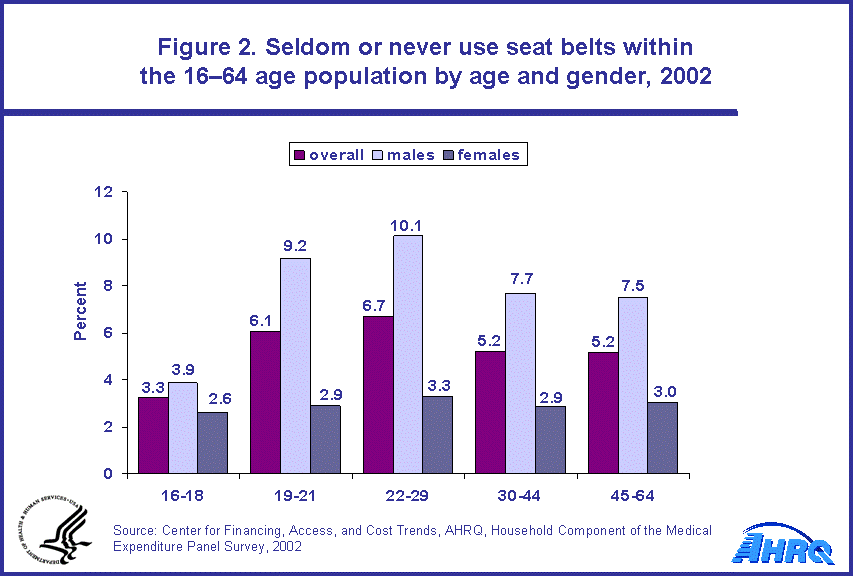 |
||||||||||||||||||||||||||||||||||||
|
||||||||||||||||||||||||||||||||||||
|
|
||||||||||||||||||||||||||||||||||||
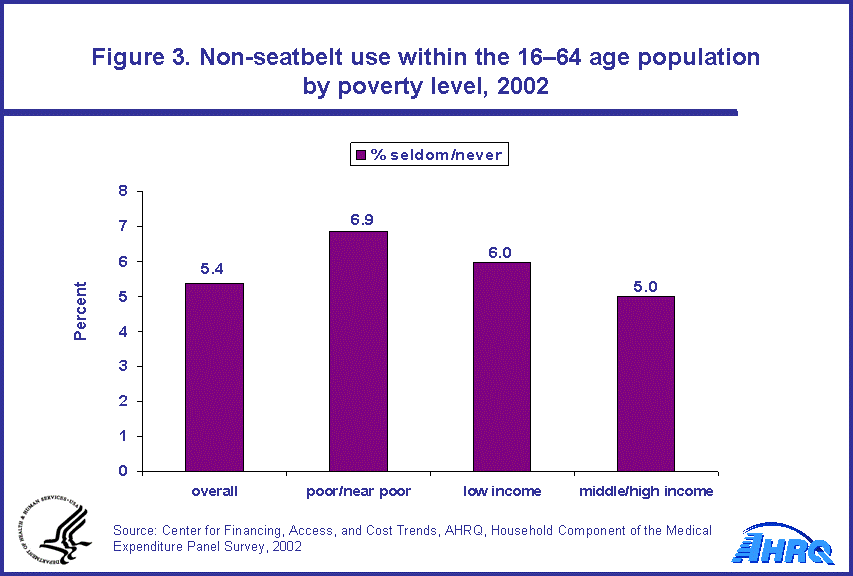 |
||||||||||||||||||||||||||||||||||||
|
||||||||||||||||||||||||||||||||||||
|
|
||||||||||||||||||||||||||||||||||||
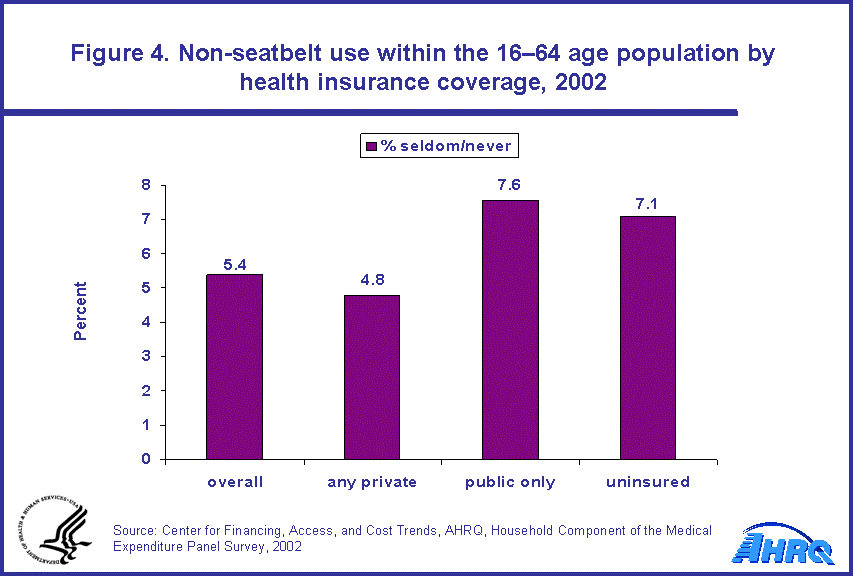 |
||||||||||||||||||||||||||||||||||||
|
||||||||||||||||||||||||||||||||||||
|
|
||||||||||||||||||||||||||||||||||||
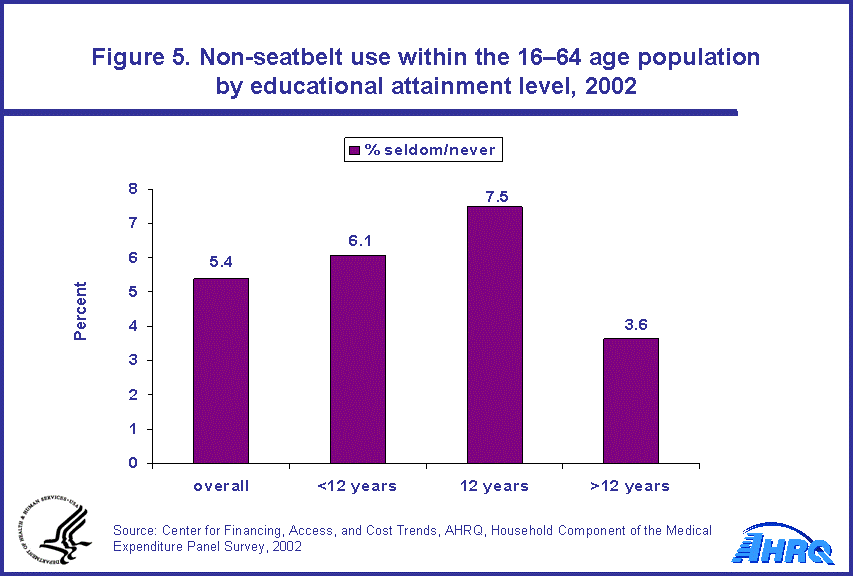 |
||||||||||||||||||||||||||||||||||||
|
||||||||||||||||||||||||||||||||||||
|
|
||||||||||||||||||||||||||||||||||||
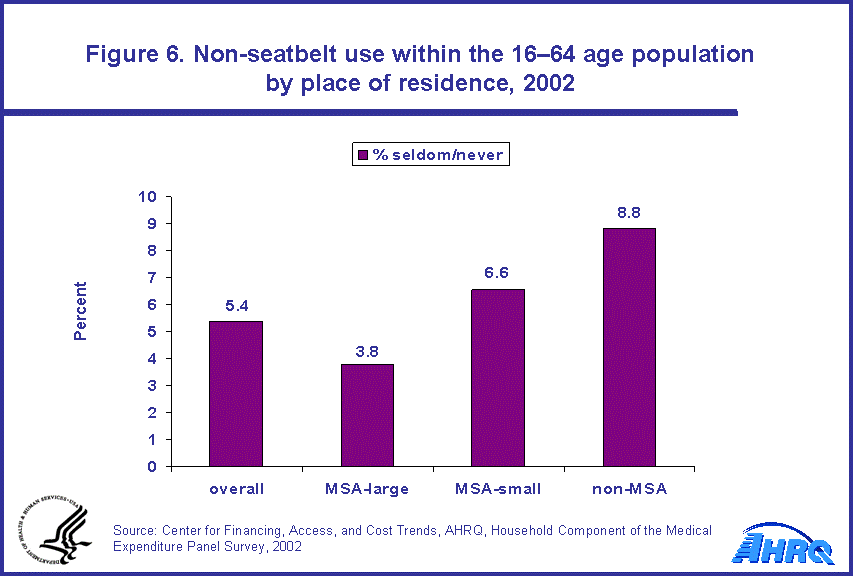 |
||||||||||||||||||||||||||||||||||||
|
||||||||||||||||||||||||||||||||||||
|
|
||||||||||||||||||||||||||||||||||||


